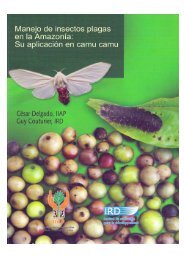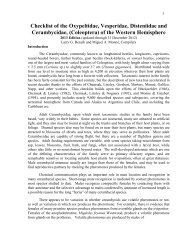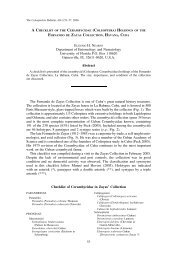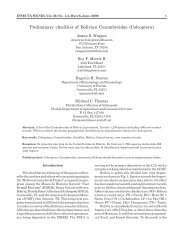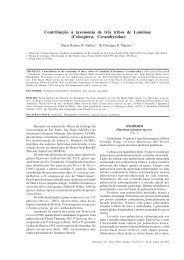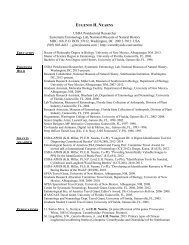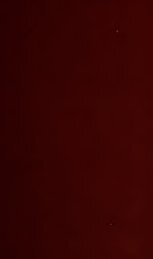You also want an ePaper? Increase the reach of your titles
YUMPU automatically turns print PDFs into web optimized ePapers that Google loves.
184 THE TRIBE ONCIDERINI<br />
reeurved spine. Antennae very long, same color as head, last segments somewhat<br />
arcuate. Pronotum more or less transversely rugose, gibbose laterally, spiniform<br />
tubercle each side very smalL Scutellum broad, truncate behind. Elytra olive·<br />
brown, a humeral angles produced, tubcrclcform, entire anterior part rugose and<br />
punctate; usually ornamented with rounded brown spots placed here and there.<br />
Body beneath olive-brown, and without maculae. Length 28 mm.; width 9 nun.<br />
Type locality : Interior Bmzil."<br />
The above is a translation of the original description.<br />
ISCHIODERES Dillon ang Dillon, gen. nov.<br />
Intermediate in many respects between lschiocentra and On·<br />
cideres, resembling certain species of the latter genus in maculation<br />
and pronotal sculpturing and the former in the pl'ocoxal uncus<br />
and the nearly lacking pronotal tubercle. Distinct from all other<br />
genera in the proportional length of the antennal segments, the<br />
third segment only slightly longer than first, fourth equal to first,<br />
and fifth and following slightly longer than fourth, eleventh long.<br />
est of all ; the prominent metncoxae; and mesosternum with a dis·<br />
tinct tubercle near apex.<br />
Elongate--ovate, subcylindrical ; dark reddish·brown to black. Head with eye<br />
broadly oblong, more than one and one·half times the height of genll.; front clongate,<br />
sides nearly parallel, vcry concave between antenna! tuberclcs; antennal tuberc1es<br />
slightly prominent, well separated, shortly dentnte at apex in male. Pronotum tmng·<br />
verse, very apex slightly narrower than basc; disk multicarinate transversely; lateral<br />
tubercles nearly wanting, feebly e(evnted, without Ii terminal process. Scutellum<br />
nearly as long as wide, apex slightly notched at middlc. Elytra clongate, sides sub·<br />
parallel to apical quarter, then broadly arcuate, apice.'! together rounded; humeri<br />
slighlly prominent, rounded !tnterioriy, 'without any tubercle at !Ingle; disk rather<br />
coarsely punctate basally, punctures fine behind middle, distinct to apex. Pro·<br />
stcrnum narrow, simple, gradually widened from apex to base; mesosternal process<br />
short, longer than wide, apically with a low distinct tubercle; mebstcrnum promi<br />
nent, on a different plane from abdomen, the difference abrupt, not gradual. Legs<br />
moderate, robust; procoxae moderntely globose, with a slender, long, strongly curved<br />
uneus anteriorly ill male; metacoxae prominent ; femora clavatc, profemora subcylindrical<br />
and rugosc irregularly in male on all faces except anterior; tarsal claw<br />
segment distinctly shorter than remaining segments together. Fifth stemite slightly<br />
longer than fourth in male, apex narrowly emarginnte. Antennae rather robust,<br />
nearly twice length of body in male; SCflpe in male reaching slightly beyond middle<br />
of pronotum, clavate on apical half ; t·hird segment one--eighth longer than first,<br />
straight; fourth equal to first, fifth and following very slightly, but measurably,<br />
longer than fourth ; eleventh longest of all.<br />
GENOTYPE : lschioderes oncideroides Dillon and Dillon, spec.<br />
nov.



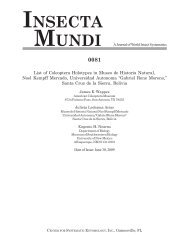
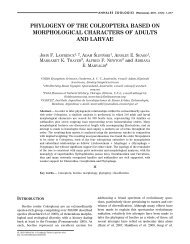


![Coleoptera. Vol. I. [Longicornia. Part I.]](https://img.yumpu.com/41202793/1/180x260/coleoptera-vol-i-longicornia-part-i.jpg?quality=85)
